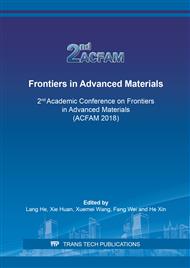p.218
p.229
p.237
p.244
p.253
p.260
p.273
p.282
p.294
Numerical Comparisons on the Effects of Wall Thickness on Extrudate Swell of Traditional Extrusion and Gas-Assisted Extrusion for Plastic Microtubules
Abstract:
In this study, the effect of wall thickness on the extrudate swell of plastic microtubules was investigated by using the finite element numerical method. For the traditional extrusion and gas-assisted extrusion, under the same process parameters, the extrudate swell ratios of plastic microtubules with the different wall thicknesses were all obtained. Moreover, to analyze the difference between the traditional extrusion and gas-assisted extrusion, the physical fields distributions, such as flow velocities, pressure and the stresses distributions of plastic microtubules with the different wall thicknesses under two kinds different extrusions were also obtained and compared. Numerical results show that, for the traditional extrusion, the extrudate swell ratio decreases with the increasing of the wall thickness, but for the gas-assisted extrusion, the swell ratios are equal to 0 and not changed. In addition, from the viewpoints of physical fields distributions, for the traditional extrusion, with the increasing of the wall thickness, the velocities, pressure and stresses of melt are all decreased, which result in the reducing of the extrudate swell phenomenon. However, for the gas-assisted extrusion, the X velocity, pressure, and stresses are all equal to 0, which results in the elimination the extrudate swell phenomenon of plastic microtubules.
Info:
Periodical:
Pages:
253-259
Citation:
Online since:
June 2019
Authors:
Price:
Сopyright:
© 2019 Trans Tech Publications Ltd. All Rights Reserved
Share:
Citation:


